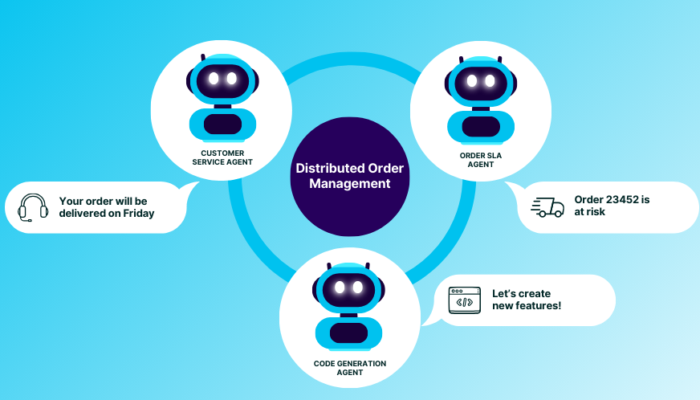Stores in specialized retail have now reopened in most countries around the world to the great relief of shoppers. When you think about it, stores played an essential role to sustain the retail business during the pandemic. They endured a lot of transformations, including:
- Stores used as mini fulfillment centers to increase the shipping capacity of brands
- Stores used as pickup points
- Stores even used a shooting stages for live shopping sessions with distant shoppers
The recent omnichannel developments also disrupted store operations. New areas and hardware were needed for sorting items, packing orders, printing labels, taking returns—the list goes on. This also required training for store staff in these new skills as they stepped into the roles of omnichannel specialists.
Now, nearly every shopping channel has a close connection with in-store, including online and marketplaces. With so many channels now trying to offer a unified experience and product assortment to consumers—and having access to the same store inventory—in-store stock accuracy is more of a challenge than ever.
Does In-Store Inventory Really Need Protection?
It’s common to hear that the only way to satisfy omnichannel customers is to protect in-store inventory. Does this mean removing a static number of units from every item quantity in store? If so, that sounds inefficient. Imagine the potential missed sales opportunities!
So, do you really need to protect your in-store inventory?
One could argue that these units were shipped to the store to be sold. Inventory forecasting systems are now better designed. They can consider cross-channel demand in-store beyond that of the local walk-in customers.
The better question might be: how can you make in-store inventory more reliable?
Several channels rely on in-store inventory. What do omnichannel brands want? To avoid overselling. No more promising units that they don’t have, or that they promised to someone else. It doesn’t make for a great customer experience.
How can you accomplish this? One option is to improve inventory management in-store from an operational perspective. The other option: consider inventory as part of a global pool. Unify your inventory and implement smart & flexible rules to determine how much inventory should be considered available. To achieve this, an Order Management System (OMS) is key.
How to Make Store Inventory More Accurate?
Historically, the accuracy of in-store inventory has been pretty poor because of the nature of a store environment, and all sorts of disruptors that come into play:
- Walk-in customers who are moving products
- Products left in fitting rooms
- Unreported broken items
- Theft
- Inaccurate stock counts
Most retailers today conduct a manual stock count twice a year, achieving an average inventory accuracy of 70%.
Dark Stores
Turning stores into “dark stores” is a radical solution to make store inventory more reliable for omnichannel demand. You can utilize the real estate to establish mini fulfillment centers closer to where the demand is. And as an added bonus, this comes with no disruptions from real customers because those stores are closed to the public.
RFID
Another solution used by retailers to radically improve store inventory accuracy is to implement radio frequency identification (RFID). With the introduction of RFID, inventory accuracy in-store instantly improves from typically below 70% to close 100%.
Every product moves inside the store and every receipt, return and sale is tracked in real-time thanks to the RFID tag that is attached to each product. Misplaced items are easier to locate.
RFID is great for employees, who can easily find products, and it’s great for omnichannel demand as store inventory is now always timely, accurate and thus more reliable for promising to online customers.
Historically, the downside of RFID has been its cost of implementation. It requires hardware in stores, such as antennas and fixed or mobile readers. Upstream in the supply chain, there are costs to equip warehouses and even suppliers with hardware to print RFID tags and track the packed items while they are moved through the supply chain until they reach the store.
While the golden age of RFID has been announced for years, what we see is still mainly pilots. The few brands that went full speed on RFID however, such as Decathlon since 2014, are seeing great results.
With the cost of RFID hardware and related technology becoming more affordable, there’s no reason why RFID will not finally start to take off in specialized retail in the next 2-3 years.
When RFID finally becomes the norm, it will be an ideal technology to connect to the Order Management Systems (OMS) as an inventory data source to use the full benefits of near-real time store stock visibility for omnichannel availability.
Operational Considerations to Improve In-Store Inventory Accuracy
There are other affordable—and easier—solutions that can be put in place immediately. Let’s explore.
Implement a good receiving process in store. If you receive directly from a vendor, always use the amount actually received when auditing shipments—not just the quantities provided by the vendor on the delivery note. When a delivery arrives from one of the retailer’s owned warehouses, implement an Advance Ship Notice (ASN) based receiving process. What does this mean? Make sure that the contents of the warehouse shipments are sent electronically to the store upfront in order to ease the receiving process.
Ideally each package or pallet received in store should be scanned, to make sure that no packages shipped by the warehouse were missed. And the item-level contents of the packages will upload automatically thanks to the ASN.
Make sure your company counts all products that are not sold because of quality issues. Count mistakes, rejects and discarded products.
Assign display items to a dedicated stock category. In some retail verticals, it might be easier to consider those products as unsellable for external channels. This is especially true if the products are likely to be damaged while displayed in store.
Assess items returned in store to make sure they are not received in a sellable state. Or, if you are not supposed to add returned items to the store’s stock.
If the store takes phone reservations or sets items aside for VIP customers, make sure these items are tracked properly. Make sure all selling channels take the reserved units into account. And, implement a process to return the items to the shelf after a period of time if the reservation was cancelled.
Beyond store operations, some good practices exist from an IT architecture perspective as well:
- It’s a bit stating the obvious, but near real-time is key. Each time a receipt is captured in the retail back-office, or a sale is recorded in the POS, make sure to update the global inventory component as soon as possible with the individual inventory events. This helps ensure that all channels that leverage inventory from that store are updated. Too often, store inventory is updated in batches every few hours—or only once per day—which makes this a challenge.
- Minimize the number of systems between the retail back-office and your channel inventory repository. The more systems that are used to process and relay inventory updates to the selling channels, the more errors you will see.
How The OMS Helps When It Comes to Store Inventory Reliability
It’s the role of an Order Management System to remove the frictions related to store inventory reliability. One of the fundamentals of an Order Management System is to provide a single view of inventory. The OMS handles the complexity of offering the same unit in stock to multiple channels.
Historically, some retailers have used POS stock data to expose in-store inventory to their website. One example of this use is for BOPIS (buy online, pickup in store). However, POS systems are not designed to be connected in real time to these selling channels. And, the same units are likely also eligible for ship-from-store or another same day service. This makes for a negative customer experience. The solution? An Order Management System should be used to unify inventory across channels and omnichannel services, because it serves as the availability master.
Protecting inventory is also important. With an OMS, you can apply buffers at either the item level or category level—or can be even more nuanced than that. Buffers or safety stock can be set by a regional or even store level, so you can protect inventory where you need it most.
This can also vary by service. A lot of retailers would usually not protect store inventory for BOPIS scenarios. However, they would for home delivery orders that can ship from a store. In this case you can protect a couple of units of the item across only the eligible locations. This has the advantage to alleviate the risk of stock outs, while limiting the missed sales opportunities.
An Order Management System can offer much more flexibility when it comes to how your store inventory is offered for sale when compared to older systems.
And What Should Happen In An Out-Of-Stock Situation?
Focus on the customer. Notify them immediately and be timely. There is nothing worse than waiting for days only to find out your item is not coming. And if an out-of-stock situation happens, your Order Management System can automatically trigger a notification to the customer service team.
The Future of Stores is Here
Customers have grown used to the convenience of BOPIS and curb-side pickup—these services are not going away anytime soon. Offer a great experience and ensure your in-store inventory is protected with an order management system designed to help you excel.




